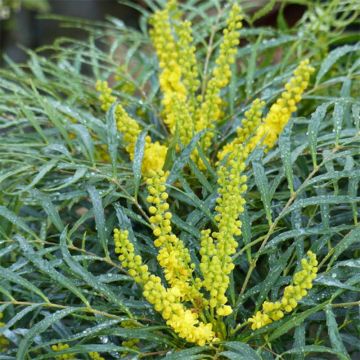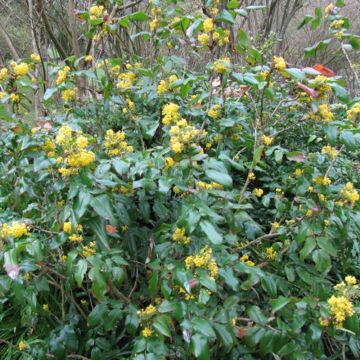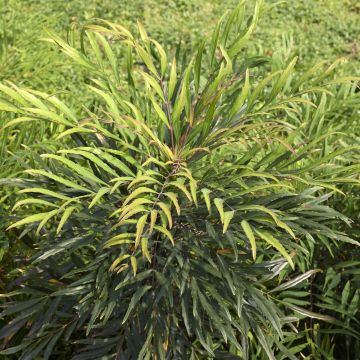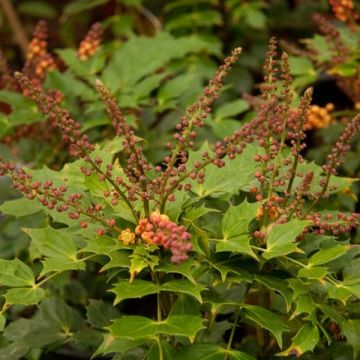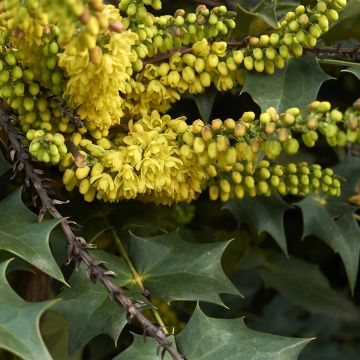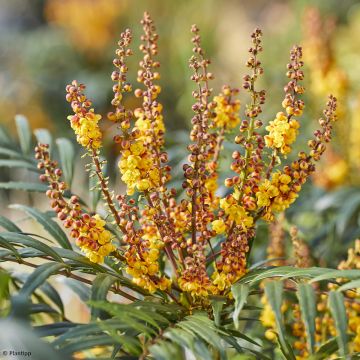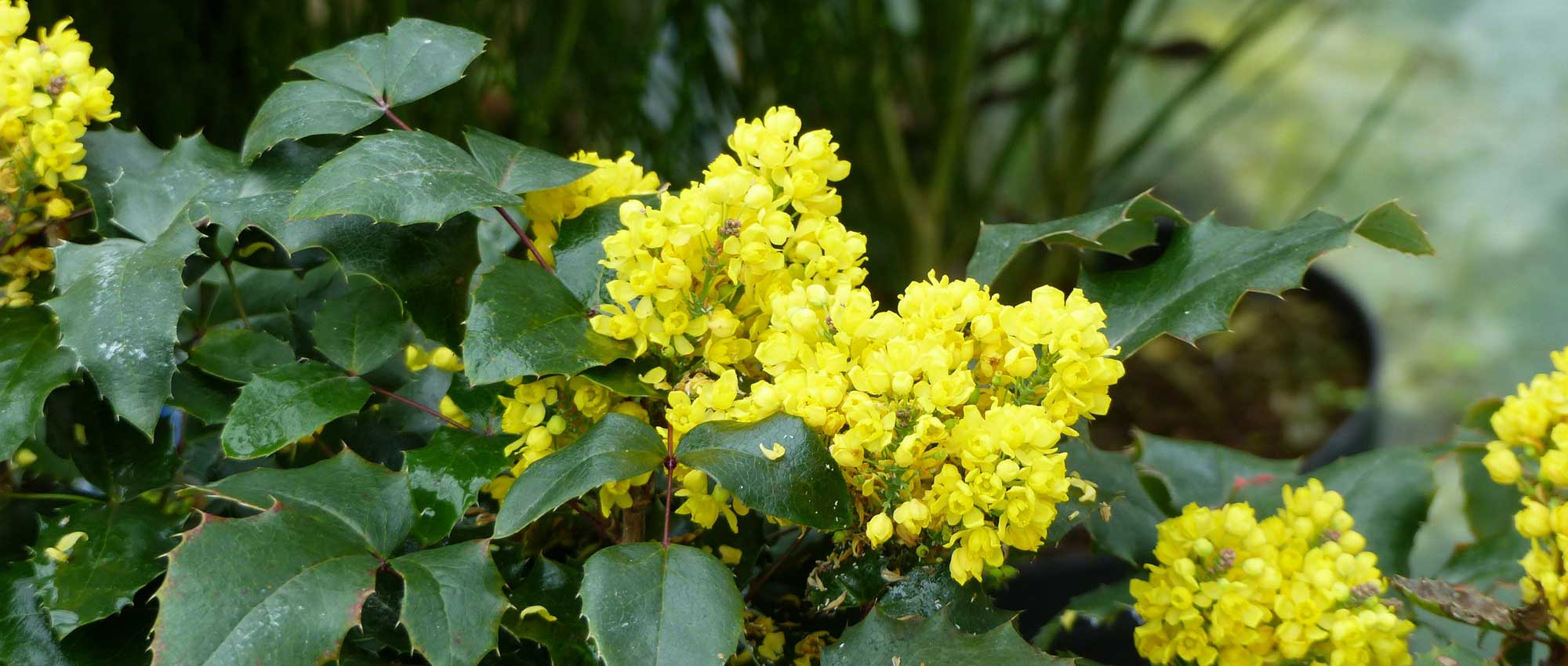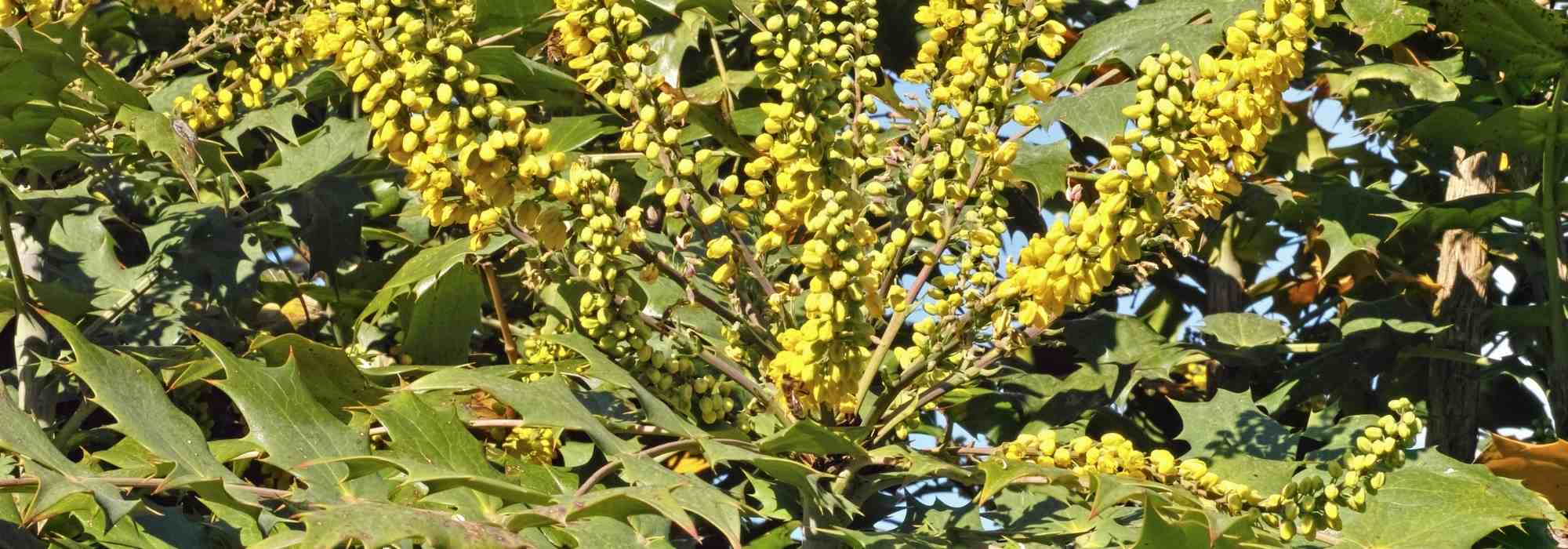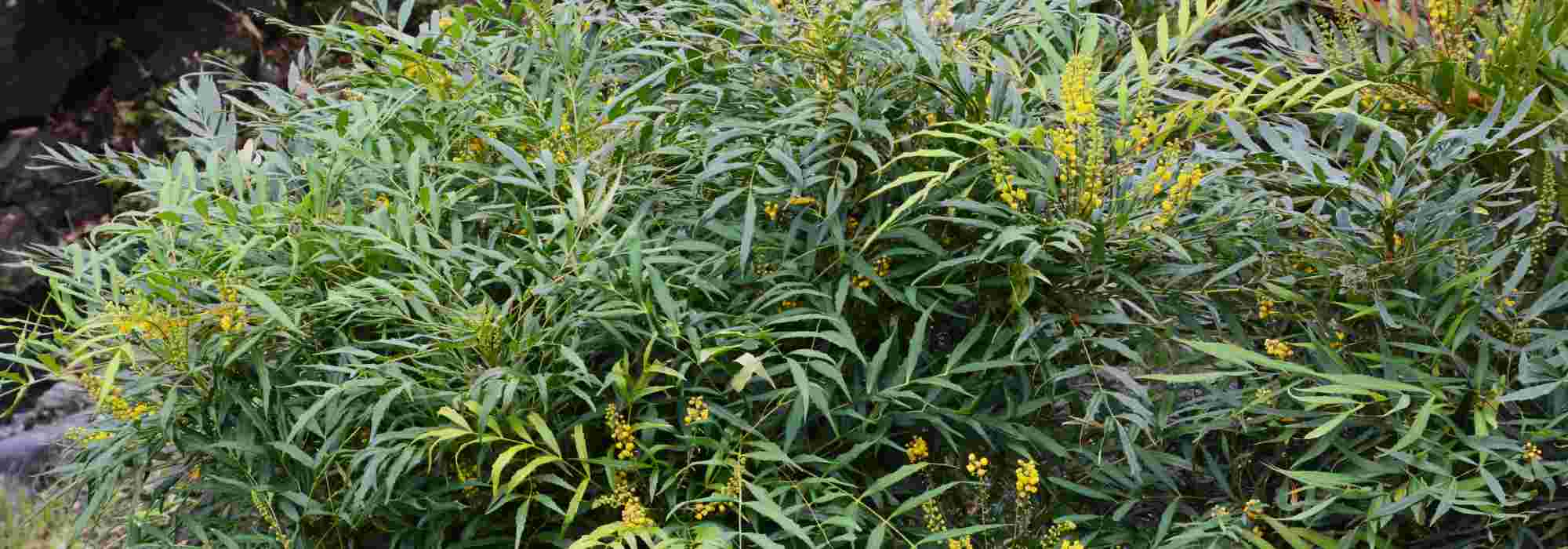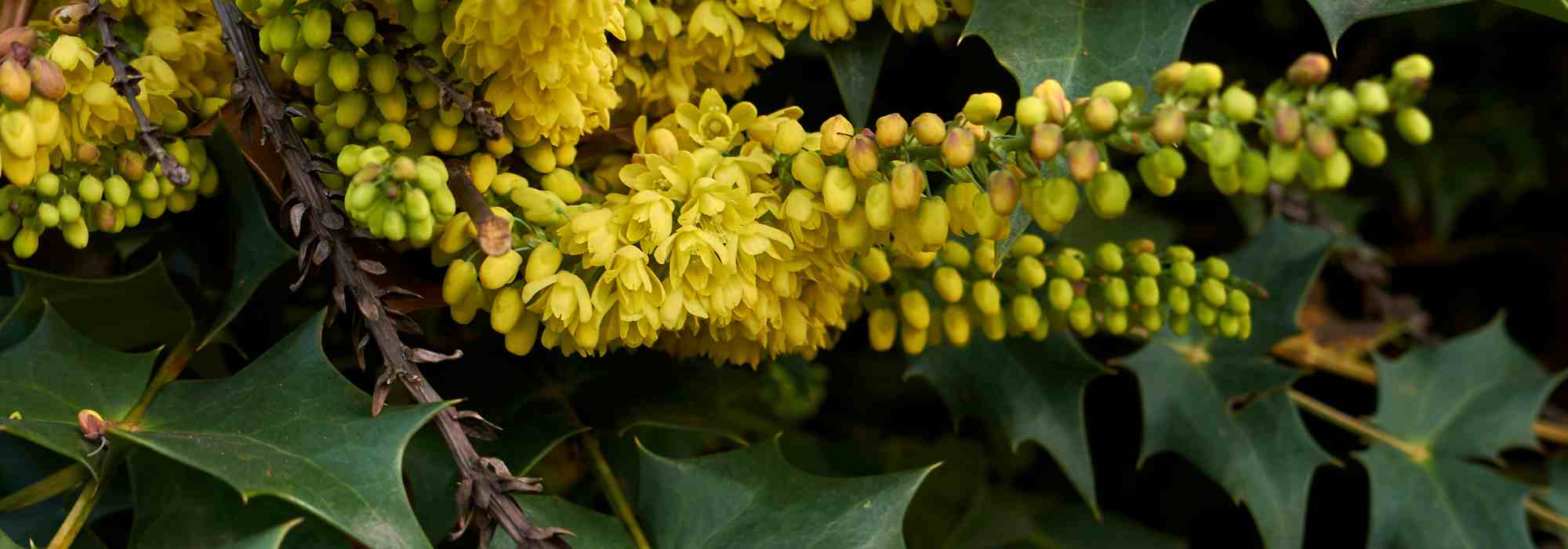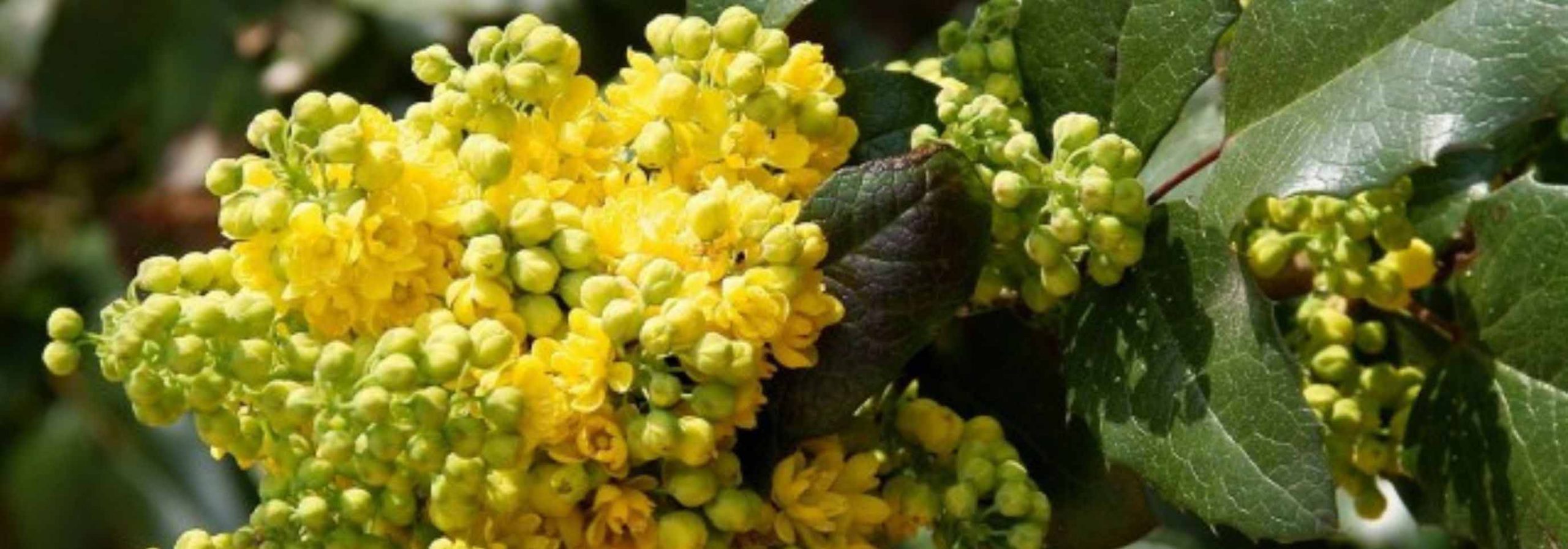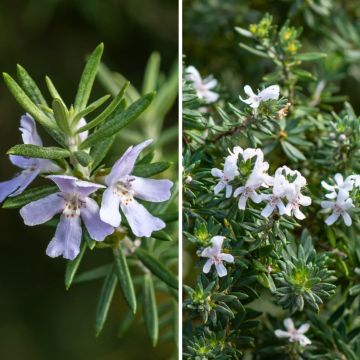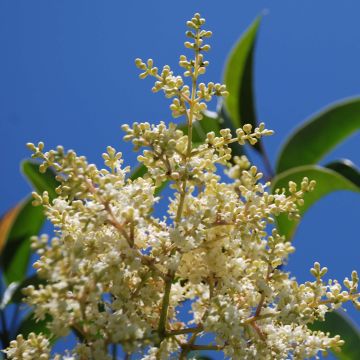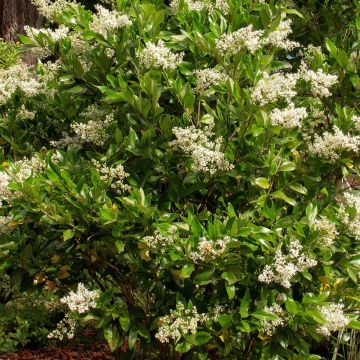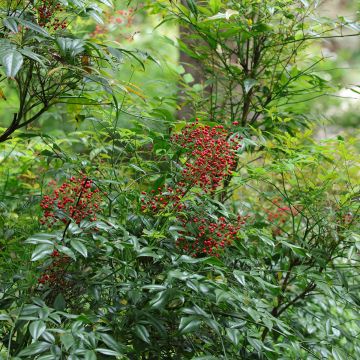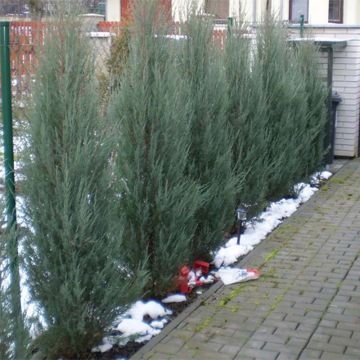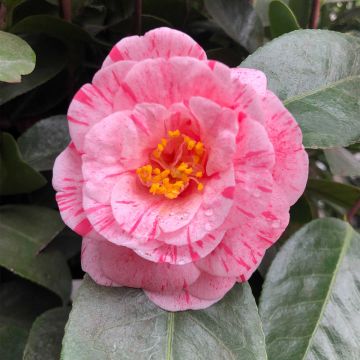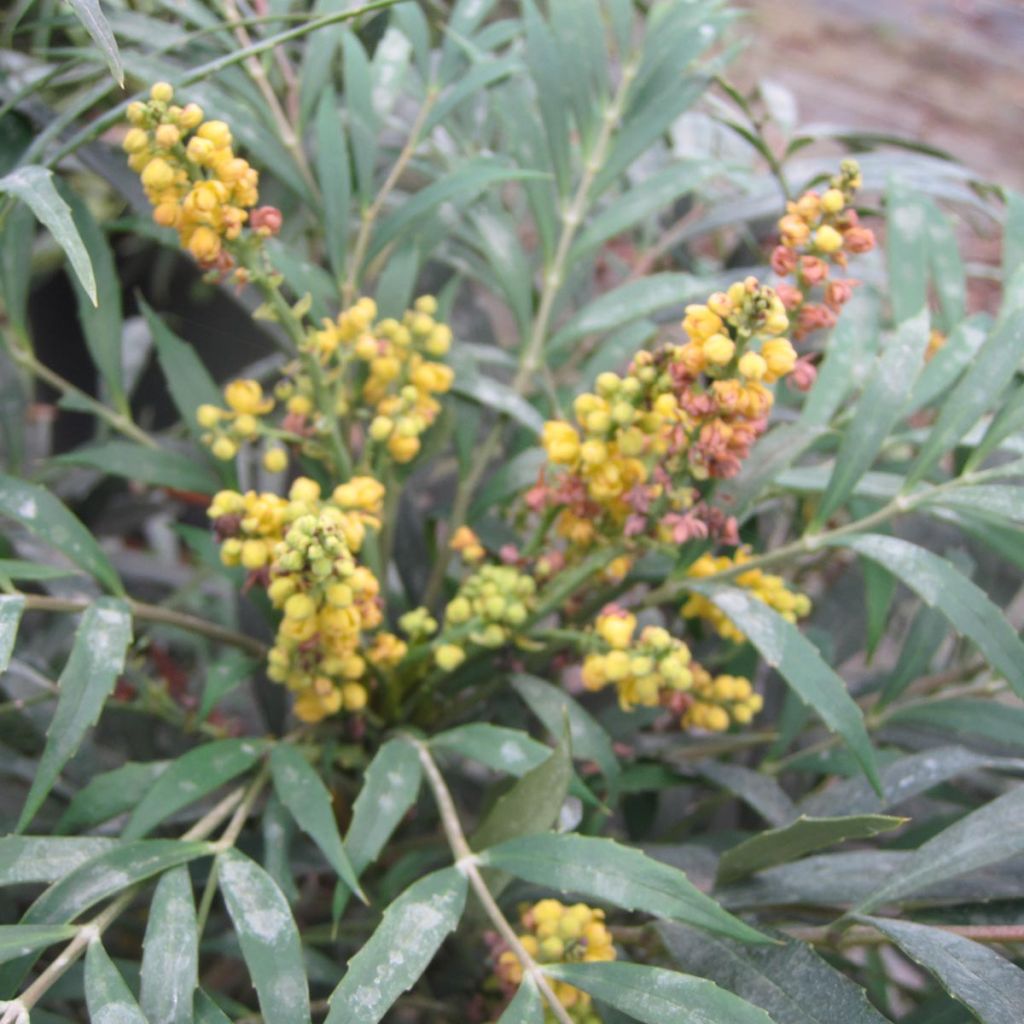

Mahonia confusa Nara Hiri - Hybrid Mahonia
Mahonia confusa Nara Hiri - Hybrid Mahonia
Mahonia eurybracteata Nara Hiri
Mahonia
Superb variety, resistant and it grows really well in partial shade. I'm lucky to have 3 of them. They start flowering in August. The foliage is very beautiful, evergreen, it doesn't prick and above all, this mahonia doesn't sucker! It only has advantages!
Chilemarie, 29/08/2017
Special offer!
Receive a €20 voucher for any order over €90 (excluding delivery costs, credit notes, and plastic-free options)!
1- Add your favorite plants to your cart.
2- Once you have reached €90, confirm your order (you can even choose the delivery date!).
3- As soon as your order is shipped, you will receive an email containing your voucher code, valid for 3 months (90 days).
Your voucher is unique and can only be used once, for any order with a minimum value of €20, excluding delivery costs.
Can be combined with other current offers, non-divisible and non-refundable.
Why not try an alternative variety in stock?
View all →This plant carries a 24 months recovery warranty
More information
We guarantee the quality of our plants for a full growing cycle, and will replace at our expense any plant that fails to recover under normal climatic and planting conditions.
Would this plant suit my garden?
Set up your Plantfit profile →
Description
Coming from Japan, Mahonia confusa 'Nara Hiri', also known as Mahonia eurybractea, is not only a rarity, but an exceptional variety. It brings a new texture to the garden with its almost carpet-like habit and its icy dark silver or pewter appearance. It is as striking as a fern, airy like a sacred bamboo, and exotic like a palm tree. An elusive shrub, it is not found in the world of temperate climate plants. Its soft foliage is adorned with lemon-yellow flowers from October to December. This evergreen bush adapts to all fresh soils, but it requires deep shade or semi-shade to thrive, away from the scorching sun.
Mahonia eurybractea 'Nara Hiri' belongs to the Berberidaceae family. It is a hybrid obtained by cross-breeding different Asian species, including Chinese ones. In nature, these plants grow in the shade of forests and undergrowth, and in thickets on rocky slopes up to 2000 m (6561.7 ft) altitude. This bush has a compact, spreading and low habit, reaching 120 cm (47.2 in) in height, with a spread of 150 cm (59.1 in). Its growth rate is moderate. Its foliage is exceptional: its leaves are extremely long, measuring up to 25 cm (9.8 in), and are divided into narrow, dark olive green spineless leaflets, which have metallic, pewter or silver reflections. From October to December, it produces soft, lemon-yellow flowers with a slight fragrance. From April to June, 'Nara Hiri' produces black-blue berries (4 to 6 mm (0.2 in) in diameter). Birds are fond of the berries. The berries can also be cooked for humans to consume, most notably in the form of excellent jellies.
Mahonia confusa 'Nara Hiri' is a shade or semi-shade plant, perfect in Asian or exotic inspired gardens. Use 'Nara Hiri' to create a striking scene with nandinas, ferns, and fritillaries. Thanks to its soft foliage, it can also be planted in containers to decorate a terrace and provide decoration in the winter months. However, ensure it is placed in the shade. In winter, the foliage of Mahonias can be used to make beautiful bouquets, but it is best to avoid picking them when there is a very hard frost.
Mahonia confusa Nara Hiri - Hybrid Mahonia in pictures
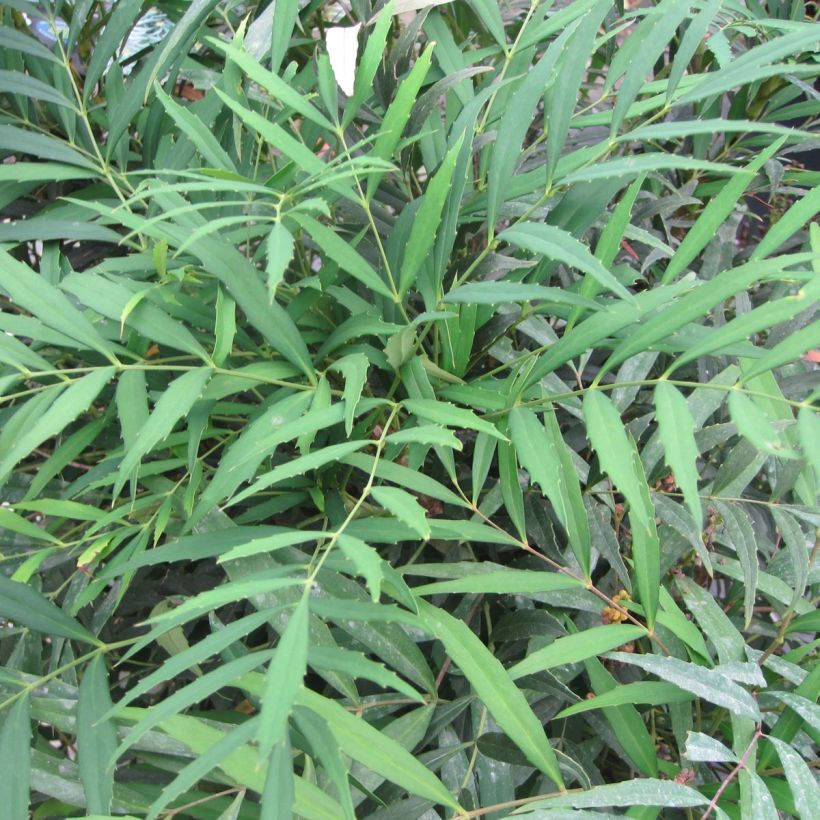

Plant habit
Flowering
Foliage
Botanical data
Mahonia
eurybracteata
Nara Hiri
Berberidaceae
Mahonia
Cultivar or hybrid
Other Mahonia
View all →Planting and care
Mahonia eurybracteata 'Nara Hiri' has no specific soil requirement, as long as it remains moist but well-drained. In heavy soil, add leaf compost and coarse sand. During the first year after installation, water regularly to help it establish. Afterwards, mulching and occasional watering during periods of intense heat are sufficient. It can grow in deep shade in forests, undergrowth, or in partial shade, even tolerating the gentle morning sun. Its hardiness is relatively good, down to -15° C (5° F). This bush requires no further care and has relatively few enemies.
Planting period
Intended location
Care
Planting & care advice
-
, onOrder confirmed
Reply from on Promesse de fleurs
Similar products
Haven't found what you were looking for?
Hardiness is the lowest winter temperature a plant can endure without suffering serious damage or even dying. However, hardiness is affected by location (a sheltered area, such as a patio), protection (winter cover) and soil type (hardiness is improved by well-drained soil).

Photo Sharing Terms & Conditions
In order to encourage gardeners to interact and share their experiences, Promesse de fleurs offers various media enabling content to be uploaded onto its Site - in particular via the ‘Photo sharing’ module.
The User agrees to refrain from:
- Posting any content that is illegal, prejudicial, insulting, racist, inciteful to hatred, revisionist, contrary to public decency, that infringes on privacy or on the privacy rights of third parties, in particular the publicity rights of persons and goods, intellectual property rights, or the right to privacy.
- Submitting content on behalf of a third party;
- Impersonate the identity of a third party and/or publish any personal information about a third party;
In general, the User undertakes to refrain from any unethical behaviour.
All Content (in particular text, comments, files, images, photos, videos, creative works, etc.), which may be subject to property or intellectual property rights, image or other private rights, shall remain the property of the User, subject to the limited rights granted by the terms of the licence granted by Promesse de fleurs as stated below. Users are at liberty to publish or not to publish such Content on the Site, notably via the ‘Photo Sharing’ facility, and accept that this Content shall be made public and freely accessible, notably on the Internet.
Users further acknowledge, undertake to have ,and guarantee that they hold all necessary rights and permissions to publish such material on the Site, in particular with regard to the legislation in force pertaining to any privacy, property, intellectual property, image, or contractual rights, or rights of any other nature. By publishing such Content on the Site, Users acknowledge accepting full liability as publishers of the Content within the meaning of the law, and grant Promesse de fleurs, free of charge, an inclusive, worldwide licence for the said Content for the entire duration of its publication, including all reproduction, representation, up/downloading, displaying, performing, transmission, and storage rights.
Users also grant permission for their name to be linked to the Content and accept that this link may not always be made available.
By engaging in posting material, Users consent to their Content becoming automatically accessible on the Internet, in particular on other sites and/or blogs and/or web pages of the Promesse de fleurs site, including in particular social pages and the Promesse de fleurs catalogue.
Users may secure the removal of entrusted content free of charge by issuing a simple request via our contact form.
The flowering period indicated on our website applies to countries and regions located in USDA zone 8 (France, the United Kingdom, Ireland, the Netherlands, etc.)
It will vary according to where you live:
- In zones 9 to 10 (Italy, Spain, Greece, etc.), flowering will occur about 2 to 4 weeks earlier.
- In zones 6 to 7 (Germany, Poland, Slovenia, and lower mountainous regions), flowering will be delayed by 2 to 3 weeks.
- In zone 5 (Central Europe, Scandinavia), blooming will be delayed by 3 to 5 weeks.
In temperate climates, pruning of spring-flowering shrubs (forsythia, spireas, etc.) should be done just after flowering.
Pruning of summer-flowering shrubs (Indian Lilac, Perovskia, etc.) can be done in winter or spring.
In cold regions as well as with frost-sensitive plants, avoid pruning too early when severe frosts may still occur.
The planting period indicated on our website applies to countries and regions located in USDA zone 8 (France, United Kingdom, Ireland, Netherlands).
It will vary according to where you live:
- In Mediterranean zones (Marseille, Madrid, Milan, etc.), autumn and winter are the best planting periods.
- In continental zones (Strasbourg, Munich, Vienna, etc.), delay planting by 2 to 3 weeks in spring and bring it forward by 2 to 4 weeks in autumn.
- In mountainous regions (the Alps, Pyrenees, Carpathians, etc.), it is best to plant in late spring (May-June) or late summer (August-September).
The harvesting period indicated on our website applies to countries and regions in USDA zone 8 (France, England, Ireland, the Netherlands).
In colder areas (Scandinavia, Poland, Austria...) fruit and vegetable harvests are likely to be delayed by 3-4 weeks.
In warmer areas (Italy, Spain, Greece, etc.), harvesting will probably take place earlier, depending on weather conditions.
The sowing periods indicated on our website apply to countries and regions within USDA Zone 8 (France, UK, Ireland, Netherlands).
In colder areas (Scandinavia, Poland, Austria...), delay any outdoor sowing by 3-4 weeks, or sow under glass.
In warmer climes (Italy, Spain, Greece, etc.), bring outdoor sowing forward by a few weeks.






























